
views
- When creating a libanomancy chart, focus on your question. Let incense burn over a piece of paper and interpret your answer from the smoke.
- If the smoke rises straight up, expect a “yes” or a positive answer. If it struggles to rise, expect a “no” or a negative answer.
- White smoke represents purity, black smoke represents negativity, and grey smoke is neutral.
What is libanomancy?

Libanomancy is an ancient form of smoke divination. Also known as livanomancy, knissomancy, or simply smoke divination, this practice originated in ancient Mesopotamia during the Old Babylonian period (2000 BCE to 1600 BCE). It involves interpreting the shapes, colors, and odors of incense smoke to gain spiritual and divine insight into a question or situation. It can also be used for meditation and the invocation of spirits.
How to Create a Libanomancy Chart

Gather your supplies and prepare your space. To create and read a libanomancy chart, you’ll need incense and an incense holder, a bowl of water, and a piece of paper. Make sure you’re in a quiet space with no drafts or airflow. Ensure the bowl is one you can comfortably hold in your hand, and test your burner and incense beforehand so you know they work correctly. Try placing a towel under the door or window to help prevent drafts, and turn off any fans or air conditioning.

Choose your question. This can be anything you want, though “yes or no” questions are common. You may want to know if you’ll get the new job you applied for, if an ex is going to come back into your life, or if you’re on the right spiritual path.

Clear your mind. Calm yourself by taking deep, cleansing breaths. You want to have an open mind that’s willing to accept the good and the bad. Focus on your question and avoid letting other thoughts cloud your mind.

Light the incense. Let the incense burn for a few seconds before blowing it out. Set the lit incense in the incense holder and hold the bowl of water in your left hand. Focus on your question as you do so.
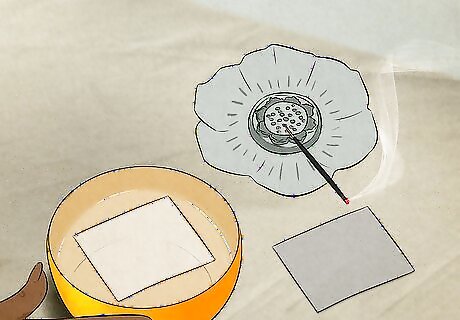
Soak the paper in the bowl of water. Dip the paper into the water for a few seconds, then lay it on a flat surface in front of the incense.
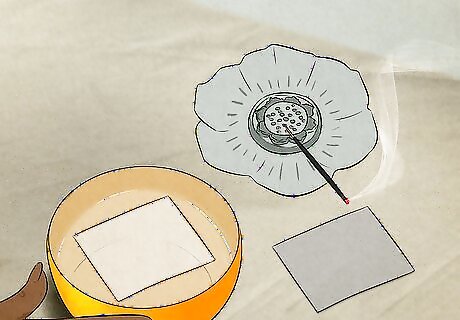
Allow the smoke to waft over the paper. As the incense burns, continue to focus on your question and open your mind to any possible answers. After a few minutes, remove the paper and see what patterns the smoke has formed to interpret your answer.
How to Interpret a Libanomancy Chart
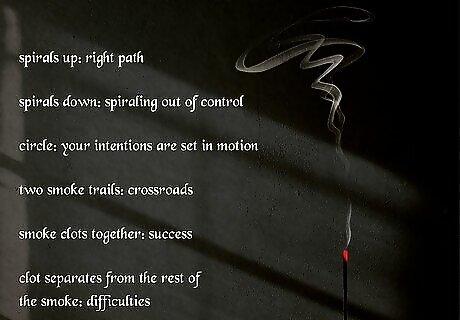
Smoke patterns There are several different smoke patterns and shapes you might see during a libanomancy reading, and they often tell you things about yourself or your journey. Interpreting smoke patterns can tell you if you’re on the road to success or if you’re likely to face challenges along the way. Here are some of the most common patterns and their interpretations: Smoke spirals: Smoke spirals reflect spiritual growth. If the smoke spirals up, you’re on the right path. If it spirals down, you may be spiraling out of control. Circles: If the smoke forms a circle, your intentions are set in motion. Expect results soon. Two smoke trails: This indicates a crossroads. You may be feeling stuck and need to choose your path. Clotting: If the smoke clots together, it signifies success. However, if the clot separates from the rest of the smoke, you can expect difficulties.
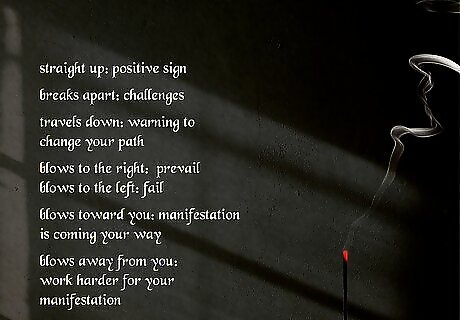
Smoke direction The direction in which the smoke blows can tell you how easily your manifestation will come to you. Here are some examples: Rises straight up: This is a positive sign or a “yes.” Breaks apart: If the smoke breaks apart or struggles to rise, it represents challenges or a “no.” Travels down: If the smoke travels down or stays near the base of the incense, it’s a warning to change your path. Blows to the left or right: If the smoke blows to the right, you will prevail, and if it blows to the left, you will fail or face challenges. Blows toward you: This is a sign your manifestation is coming your way or that someone is thinking about you. Blows away from you: This indicates you need to work harder for your manifestation to work or that someone is trying to ignore you.
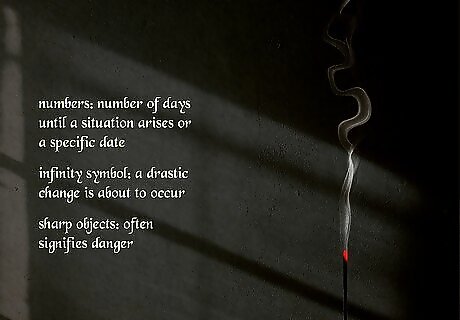
Smoke shapes Sometimes, you may see specific shapes, numbers, or symbols in the smoke. These shapes are typically personal to you and your question, and you’ll need to rely on your intuition to answer them. However, there are some common interpretations you can use to guide yourself: Numbers: Numbers often represent the number of days until a situation arises or your manifestation occurs. They could also signify a specific date. Infinity symbol: Seeing the infinity symbol often means a drastic change is about to occur. Typically, this event will be something good. Sharp objects: If you see something sharp like a fork, a knife, or a trident, this often signifies danger. Take precautions by using a protection spell or carrying obsidian to absorb negative energy.

Smoke size The size and thickness represent how strong an event or emotion will be. Large, thick smoke suggests a major event or strong emotion. Small, thin smoke suggests a minor event or subtle feeling.

Smoke color Incense smoke can be white, black, or grey. White represents purity, Black represents evil or negativity Grey represents a neutral state.
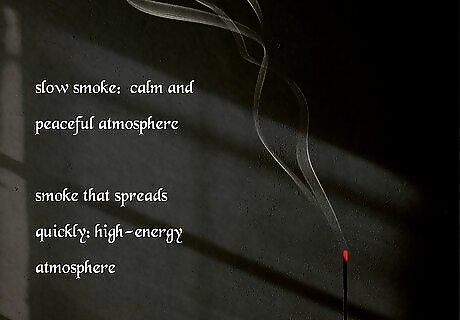
Smoke speed The speed at which the smoke flows from the incense reveals the energy level of the situation. Smoke that spreads slowly represents a calm and peaceful atmosphere. It’s also a sign that the event will happen later on in the future. Smoke that spreads quickly represents a high-energy atmosphere and an event that will happen soon.
How to Improve Your Libanomancy Readings

Practice meditation and grounding. Meditating before a reading helps you clear your mind and connect with your inner self. Ground yourself by visualizing that roots are extending from your body into the ground.

Keep a libanomancy journal. Dedicate a journal to all your readings, observations, and interpretations. This allows you to track repeating patterns, identify personal symbolism, and reflect on the accuracy of your interpretations over time.

Seek guidance from experienced practitioners. By reading books, attending workshops, and asking other practitioners for assistance, you’ll broaden your understanding of libanomancy and continue to develop your interpretation skills.


















Comments
0 comment